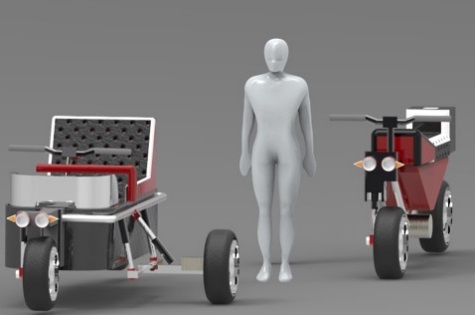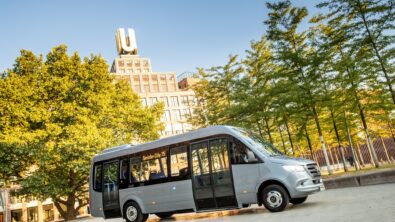The Essence of Engineering

Recently the Launch Forth community asked its members to solve some of the mobility challenges of living on an island.

As a judge of the Electric Island challenge, I had a chance to follow-up with a few of the winners that used Solid Edge to design their entries and I’m pleased to share their success and feedback with the Solid Edge community.
Congratulations to Edwin Jiménez who designed every part of his concept in Solid Edge, demonstrating the benefit of synchronous technology to rapidly design parts, a strong use of the materials selection feature, and overall creativity.
Edwin’s concept consists of a small autonomous battery electric vehicle named María, with the basic shape of a small truck. It fits in the vehicle categories: LSV (Low Speed Vehicle), MSV (Medium Speed Vehicle) and NEV (Neighborhood Electric Vehicle). It has high ground clearance, narrow and long design, twin steering, medium range and high power (when needed). The chassis/frame material is carbon fiber reinforced polycarbonate and the body is PET (Polyethylene terephthalate), fully recyclable, with 2-in-1 configurations (Fully Enclosed with A/C and Open Air). Maria is also Smart Grid compliant, has a backup generator mode (when any natural disaster or emergency occurs) and can be both privately owned or as a ride hailing service.

Gladys Mobility Maria Concept by Edwin Jiménez
Edwin commented, “Solid Edge includes robust CFD and rendering options, very useful “Steering Wheel” and a “pop up pizza” tool, a very easy to use “motor” feature to make things move and it is easy to install with all the tools included. These advantages in Solid Edge allowed me to “prototype” on the fly, getting ideas from the “perfect world in my head” to the ready to produce 3D model; using advanced tools like Frame, rendering, motors, etc, without any issues. From idea to finished 3D model without issues.”
I also connected with Bret Wooten who works on his designs with his daughter! What a great hobby for a father and daughter. Bret and Joselyn designed an entry they call the Island Café.


Island Café by Bret Wooten
Bret imagined that the steering of two bikes could be tied electrically together. The main bike steering would control the steering of the sidecar. But, the important part is that the side car would also lean with the bike, to the right and left, achieved through a hydraulic assist system. Leaning the bike left or right would pressurize the system to lean the side car the same direction however shifting the weight in the sidecar would not affect the bike. A small hydraulic pump would be used to speed movement to make it more responsive and aid in leaning the side car.
Pretty Clever! I commend Bret on his use of synchronous technology and Keyshot rendering, which is so important in presenting work to prospects and customers or even in school or design competitions.
It was a pleasure to serve as a judge in the EV Island design challenge and inspiring to see so many people excited about engineering, combined with a willingness to share their time and talents to solve real-world challenges. In fact, just last week I was reading an article about work being done by the Great Barrier Island Council to have public electric vehicle charging stations installed, which will be the first on the island.
If you have spare time to share, check out the community at www.launchforth.io, and see what challenges you can help to solve. Hope to see you there!



Comments